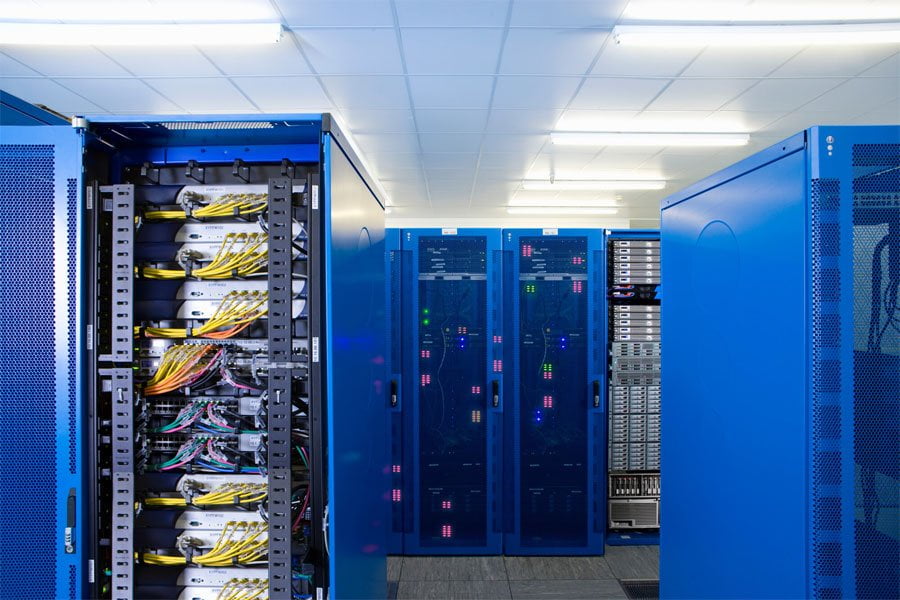Currently, 28% of business is conducted online, and it’s forecasted to grow at an annualized rate of 3.6%. Even if your business is a brick-and-mortar one, there’s a good chance that you have digital data related to your operations.
The fact is, the internet plays a huge role in both our personal and business lives. Without it, your company would quickly crumble, which means it’s important to get your technology right.
One piece of the puzzle is selecting the right computer server. Read on to see the types of servers there are and which can are optimal for your business.
Tower Servers
Most small and medium-sized businesses opt for tower servers, as well as individuals who need moderate computing power and storage capacity.
This type of server is a standalone type, and as its name suggests, it’s housed in a tower-style case. This means it looks like a desktop computer case.
Tower servers are versatile; they come in different sizes and configurations, so they’re great for scalability. In addition, they’re easy to set up and maintain.
Another benefit of tower servers is that they’re usually more affordable than some of the other servers on this list.
Rack Servers
Rack servers are great too since they can be mounted in standard server racks. If you’re short on space, then you’ll be pleased to know that they’re vertically oriented, meaning you can stack them on top of one another.
Rack servers are commonly used in data centers, but they can also be utilized in enterprise environments where every square inch needs to be used.
If you’re after high scalability in addition to excellent space usage, then you’ve got it with rack servers. You can easily add or remove servers from the rack as your computing needs change. In fact, you can even hot-swap components, meaning you don’t have to shut down the server to replace or add components.
Plus, this server supports remote management technologies, like Intelligent Platform Management Interface (IPMI) and KVM (keyboard, video, mouse) over IP.
Blade Servers
Blade servers are also rack-mounted, but they’re even more compact and densely packed. They’re designed to fit into blade chassis, typically in a horizontal orientation.
This type of server shares common resources, such as power, cooling, and network connections within the chassis. While they share resources, blade servers are hot-swappable, so maintenance and upgrades are simplified.
What’s excellent about blade servers is they have redundant features like power supplies, cooling fans, and networking components. This means that if anything fails, these backup parts can take over. As a result, there’s little downtime.
Blade and Storage Servers
Did you know that you can combine blade and storage servers? This gives you high-density computing capabilities, as well as large storage capacities.
Blade and storage servers are best used for data-intensive applications. These can include databases, file sharing, and media streaming.
The advantage of using this type of server is there’s RAID (Redundant Array of Independent Disks) support, which ranges from 0 to 10. You can configure it based on your performance and redundancy requirements.
Also, they can integrate seamlessly with other data center infrastructure components. You’ll get a comprehensive and standardized approach to your data center operations.
Virtual Servers
Virtual servers are also known as virtual machines (VMs). They’re software-based, and for all intents and purposes, function just like a physical server.
They’re highly efficient since you can run multiple virtual services on one single physical server. This saves money in terms of hardware, power, and cooling. This is why they’re widely used in virtualization technologies and cloud computing environments, such as Microsoft SQL on Oracle Cloud, which is technically a database server.
The biggest benefit of using a virtual server is that you can do live migrations. You can move a running virtual server from one physical server to another without interrupting its operation. And if anything happens, there are snapshot and backup features, so you can easily roll back the current state of the server and recover in case of issues.
Microservers
Not planning on doing much computing? Then you might want to look into microservers.
These are small-scale servers designed for lightweight tasks. They’re often single-socket servers with low-power processors and minimalistic hardware configurations.
Microservers are often used for web hosting, content delivery, and basic computing applications. Since they have low power consumption, this means they’re cost-effective too.
These are scalable too. If needed, you can house multiple microservers in a chassis or blade enclosure.
GPU Servers
As you might’ve guessed, GPU servers are meant for more powerful tasks, as they utilize the graphics processing unit. They can be used for scientific simulations, machine learning, and other things that require heavy computation.
GPU servers shine when you need parallel processing tasks. They’re also fantastic for supporting multiple VMs. Plus, you can combine several to form GPU clusters or farms, which is often seen for scientific applications.
The drawback is that since GPU servers are so powerful, they require robust cooling systems and adequate power supplies. Otherwise, they can overheat.
Application Servers
Application servers are used for specific software applications and related tasks. Key features include load balancing, clustering, and fault tolerance. These result in high availability and performance for apps.
If your business creates apps, then this type of server will be beneficial. It’ll play a crucial role in the deployment, execution, and management of your apps.
Pick the Right Types of Servers for Your Business
There are several types of servers on the market, and they all have their own advantages and drawbacks.
But now that you know more about each one, you can easily cross off those that don’t fit your needs and budget. From there, you can dig deeper and find the computer servers that can help your company thrive.
Want to learn more about the types of technology that can aid your business? Then keep browsing our blog page now.











